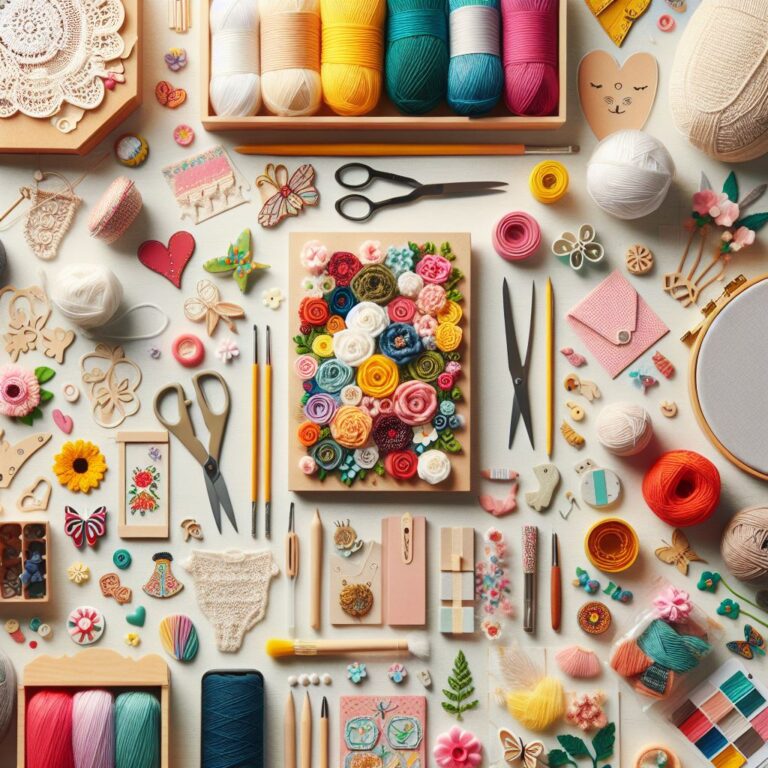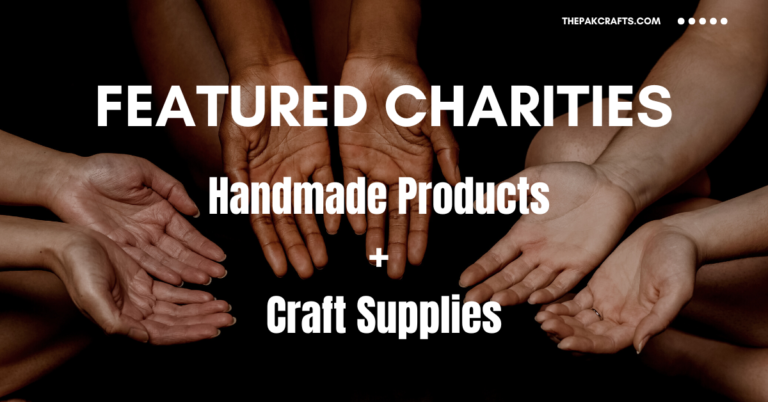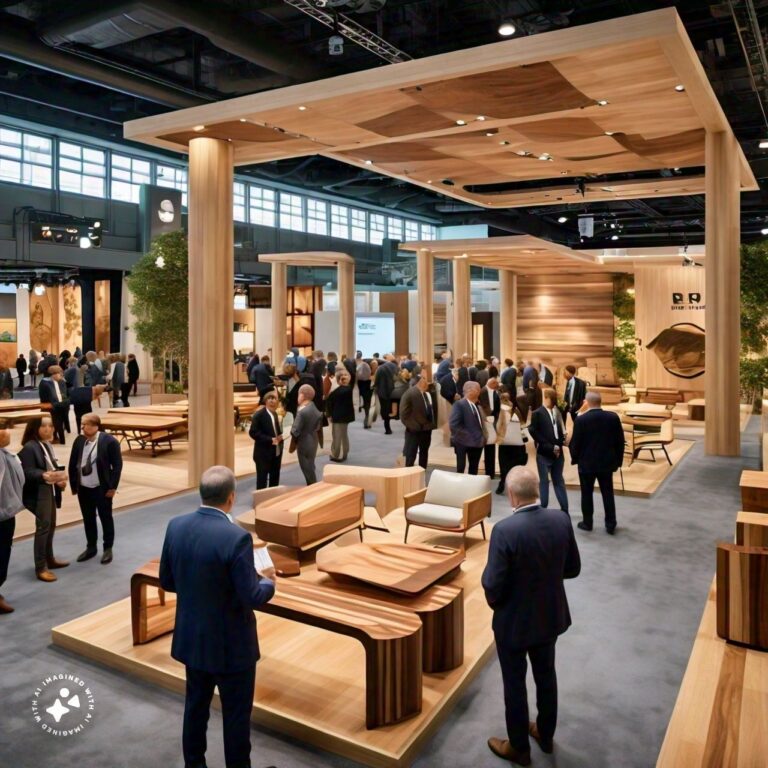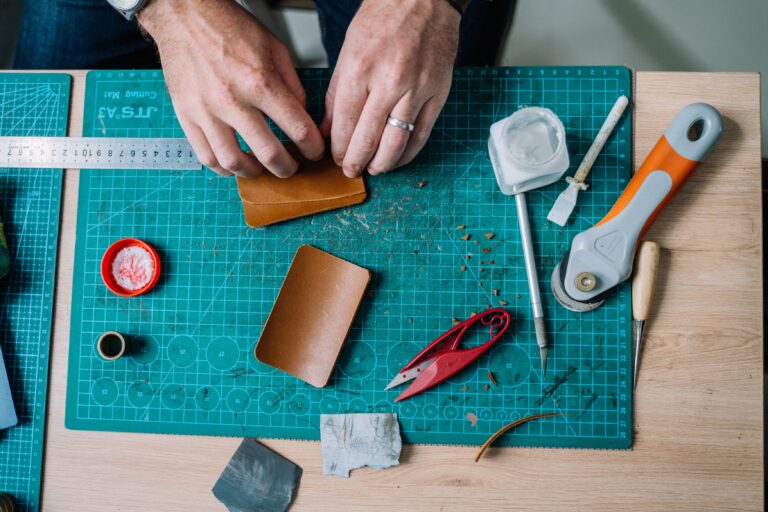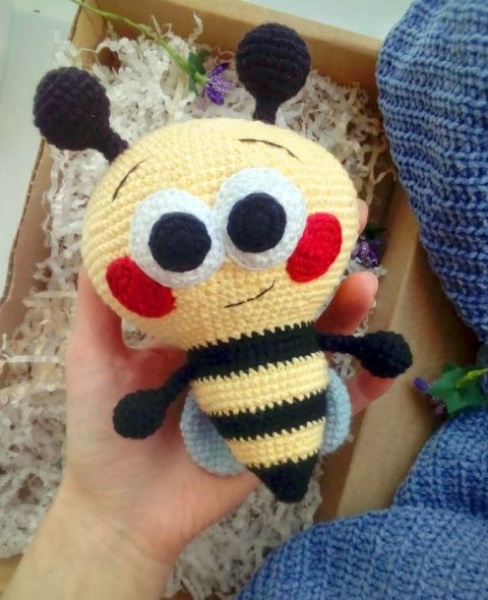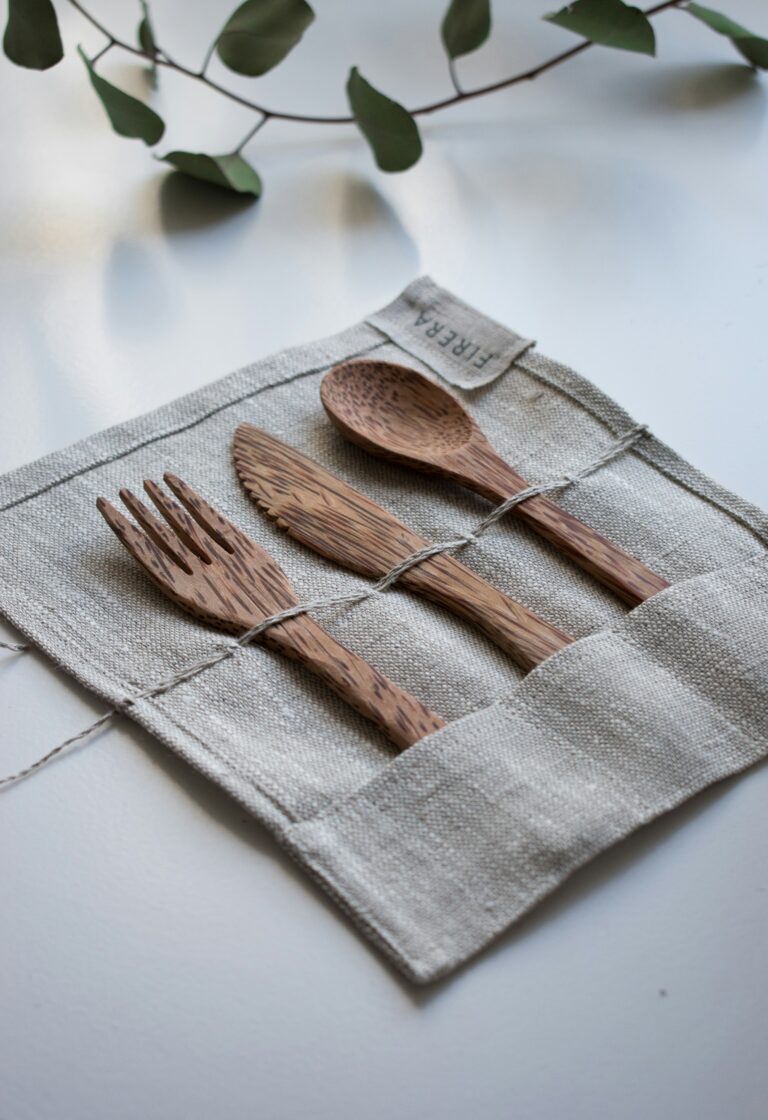Let’s explore the necessary raw materials used in pottery. We’ll analyze how elements like beeswax and several solvents uniquely contribute to the pottery craft. This journey will show how these essential pottery raw materials, composed with the potter’s skill, are transformed into beautiful and functional pieces.
Clays
Ball Clay
Ball clay manifests flexibility and finesse. It has a velvety texture and can be molded effortlessly and efficiently into anything using your hands. This clay, known for its plasticity and bonding prowess, transforms a simple lump into a canvas for artistic expression. Ball clay can add elegance to create a masterpiece by using a potter’s wheel or hands.
China Clay (Kaolin)
Kaolin, the eminence of ceramic, is pure and clean. This gentle clay, also known as China clay, graces the hands of potters, offering a fine texture that invites intricate designs and delicate craftsmanship. It symbolizes purity, providing a blank slate for the artist’s imagination. Its role is prominent in the creation of porcelain masterpieces.
Fire Clay
This clay is known for its resilience and unyielding behavior. In the kiln, fire clay is like a quiet hero. It makes strong bricks that handle super-hot temperatures, helping create rigid pots and sculptures that stand tall, like the flames that made them.
Stoneware Clay
Stoneware clay is a long-lasting material used in pottery known for its rough texture and strength. It becomes solid when fired at high temperatures, making it perfect for everyday items like mugs and plates. This type of clay is functional and aesthetically pleasing, representing a blend of practicality and artistry in craftsmanship.
Earthenware Clay
Earthenware clay is a traditional and favorite soft clay known for its holistic qualities and connection to ancient practices. It is often used to make items like terracotta pots and decorative statues. This type of clay is appreciated for its workability and imperfect look, which adds a personal and earthy feel to the objects made from it. It represents a transformation from simple soil into artistic creations.
Porcelain Clay
Porcelain clay is a high-quality, refined type of ceramic known for its clarity and delicate nature. It contains kaolin, which gives it a distinct white color. Porcelain is used to make elegant and functional items like teacups. Its creations are a testament to skilled craftsmanship, showcasing porcelain’s unique and sophisticated beauty.
Additives
Pottery additives enhance clay properties, improving workability, strength, and firing in ceramic art and functional wares.
Grog (Fired and crushed clay)
Grog, a unique component in clay, is made from fired and ground clay, giving it a harsh texture. This material adds a natural, earthy quality to pottery, influencing the final texture of the pieces. It’s functional in the shaping process and contributes to the aesthetic, offering a rugged and natural appearance that reflects the beauty of the natural world. Grog enhances the character of pottery, making each piece distinctively textured.
Silica Sand

Silica sand plays a crucial yet often unnoticed role in pottery, enhancing the clay’s strength and stability. It subtly works to maintain the structure of the clay, allowing artists to shape it without it collapsing. Adding silica sand gives pottery a sturdy quality, rooting the art in a blend of natural elements and durability.
Talc
Talc, rich in magnesium, makes clay softer and more accessible to shape, aiding in pottery-making. It improves the clay’s flexibility, allowing for smoother shaping. This addition gives the final pottery products a refined and elegant appearance.
Feldspar
Feldspar plays a crucial role in creating glazes in pottery. It helps to lower the melting points of other materials, allowing them to blend smoothly and produce a range of colors and textures. Feldspar gives pottery pieces a shiny, glass-like surface when used in glazes, demonstrating its importance in custom pottery making.
Bentonite (a type of clay used as a plasticizer)
Bentonite is a type of clay that adds flexibility to pottery, making it easier to shape. Its primary role is to help the clay maintain its form while being molded. Bentonite works subtly, aiding artists in creating smooth curves and lines. It demonstrates the effective collaboration between the artist’s skill and the adaptable nature of clay.
Ballast (for weight and stability)
In pottery, ballast is essential for adding weight and stability to pieces, helping them stay upright and balanced. It can be achieved through additional materials or careful design. Ballast combines practicality with artistic expression, ensuring that pottery is visually appealing but also functional and stable. This aspect plays a crucial role in balancing the creative design and the practical use of the pottery items.
Fluxes
Pottery fluxes are substances added to clay bodies and glaze, lowering their melting point and enhancing their workability and strength.
Feldspar
Feldspar is a crucial component in pottery, especially in making glazes. It acts as a flux, which helps lower the melting point of other materials in the glaze mixture. This property is essential for combining these materials effectively during firing. Feldspar turns regular clay into a smooth and glossy finished product, enhancing the appearance of ceramic items.
Nepheline Syenite
Nepheline Syenite plays a crucial role in ceramics, blending different ingredients effectively during firing. Its distinctive makeup enhances the clay’s properties, producing varied textures and intricate finishes in the final ceramic products. This mineral is valuable in achieving aesthetics.
Whiting (Calcium Carbonate)
Whiting, a key ingredient in glaze making, comprises calcium carbonate. It stabilizes the glaze by neutralizing acidity, producing durable and vibrant finishes. Whiting helps ensure glazes adhere well to surfaces, creating a resilient and glossy appearance on ceramics.
Talc
Talc, rich in magnesium, is an essential material for potters. It improves the clay’s plasticity, making it easier to shape and mold. This results in smoother curves and finer lines in pottery. Talc helps create pieces with a simple, elegant beauty, demonstrating its quiet but significant role in pottery—functional qualities in ceramics.
Colorants
Pottery colorants raise aesthetics, using oxides and stains for diverse hues in glazes, underglazes, and clay bodies for artistic expression.
Metal Oxides (e.g., iron oxide, cobalt oxide, copper oxide)
Metal oxides are used in pottery to add color, and each type creates different hues. Iron oxide produces rusty reds, cobalt oxide brings bright blues, and copper oxide gives green tones. These materials allow potters to add various colors to their work, blending art and science with natural elements and skilled craftsmanship.
Stains are colorful and robust pigments used in ceramics to add vibrant colors to glazes. They can transform ordinary pieces into works with various colors, from bright reds to deep blues. These stains are essential in pottery, adding depth and interest to the artistic work.
Binders

Mason Stains
Mason stains are powdered pigments that come in various colors and are used by potters to add color to glazes. These pigments allow potters to turn their works into vibrant and expressive pieces. Using Mason stains, pottery can be infused with various colors, enhancing creativity and offering numerous design possibilities.
Colored Clays
Colored clays provide a colorful option in pottery, thanks to their natural pigments. They allow potters to be creative, enabling them to use techniques like marbling, layering, or sculpting. These clays transform pottery pieces into more than just functional items; they become artistic expressions where the earth’s colors play a vital role in the creative process.
Pottery binders, crucial for clay cohesion and capability, include substances like slip, paper, and synthetic polymers for enhanced durability.
Bentonite
Bentonite is a type of clay often used in pottery to enhance flexibility. As a plasticizer, it makes the clay more pliable, helping artists shape their creations more easily. This property of bentonite is crucial in ensuring that pottery pieces maintain their shape and structure, demonstrating its essential role in combining functionality and form in ceramic art.
CMC Gum (Carboxymethyl Cellulose)
CMC Gum is an essential additive in pottery made from cellulose. It helps stabilize and bind the different materials together, ensuring they mix well without issues. CMC Gum acts like a silent guide, allowing artists to turn their ideas into structured, well-formed creations. It plays a crucial role in making the pottery process efficient and effective.
Frits
Pottery frits are fusible materials used in ceramic glazes to improve properties like durability, color, and texture in fired pottery.
Boron Compounds
Boron compounds are essential in ceramic glazing to help lower glazes’ melting points. This makes the glazes turn glossy and colorful when fired in a kiln. In ceramics, boron compounds act like special additives that give pottery a shiny, long-lasting finish, demonstrating the critical interaction between heat and chemical reactions in pottery-making.
Silica
Silica plays a crucial role in pottery, especially in glazes. It helps control the melting point during firing, contributing to the shiny, glass-like surface of finished pottery. This process involves a careful balance of heat and materials, where silica helps turn a potter’s vision into reality, demonstrating the intricate relationship between temperature, best pottery raw materials, and the art of custom handmade pottery making.
It plays a crucial role in enhancing the durability of
ceramic products. As a form of aluminum
oxide, it strengthens glazes, making them both
Kiln Furniture
Kiln furniture includes shelves and posts vital for encouraging and positioning ceramics during high-temperature firing in a kiln.
Kiln Shelves (made from materials like silicon carbide or cordierite)
Kiln shelves, essential inside a kiln, are made from solid materials like silicon carbide or cordierite. They support pottery pieces as they change and harden in the high heat. Silicon carbide shelves are durable under intense heat, while cordierite shelves offer stability and strength. During the firing process, these shelves play a crucial role in holding and protecting the pottery, ensuring a successful transformation.
Kiln Posts and Stilts (made from refractory materials)
Kiln posts and stilts, made from heat-resistant materials, play a crucial role in pottery firing. They elevate the pottery inside the kiln, preventing it from sticking to the shelves during the high heat. These supports are designed to be strong and heat-resistant, ensuring that pottery maintains its shape and function throughout the firing process. In ceramics, kiln posts and stilts are essential for successfully firing each piece, thanks to their durability and ability to withstand the kiln’s intense conditions.
Glaze Materials
Pottery glaze involves materials like silica, feldspar, kaolin, and several oxides for color and texture in ceramics.
Feldspar
Feldspar plays a crucial role in the formation of glazes in pottery. It acts as a flux, which helps lower the melting points of other materials in the glaze. This allows everything to melt smoothly in the kiln, creating a uniform and glossy surface on the pottery. Feldspar is essential in transforming pottery into pieces with a shiny, glass-like finish.
Silica
Silica plays a crucial role in creating the glass-like surface of ceramic glazes. It helps control the melting point during firing, transforming the raw materials into shiny, smooth finishes. Silica adds apparent, bright qualities to the final product of ceramics.
Whiting
Whiting, a key ingredient in glaze making, comprises calcium carbonate. It helps to stabilize the glaze by neutralizing acids, creating a durable and consistent finish. This ingredient ensures glazes adhere well to surfaces, producing a resilient and visually appealing finish on ceramic pieces.
Zinc Oxide
Zinc oxide is an essential component in ceramic glazes and is known for adding brightness and opacity. It acts as a flux, working with other materials to enhance colors and the visual depth of the glaze. Zinc oxide is crucial in making glazes more vivid and eye-catching in ceramics.
Alumina
Alumina, a component in glazes, is known for enhancing durability. It’s made of aluminum oxide, which strengthens the surfaces of ceramics. When used in glaze formulations, alumina contributes to the beauty and longevity of the finished piece, providing an invisible but crucial layer of strength.
Borax
Borax is an essential ingredient in ceramic glazes, acting as a flux that reduces the melting points of other components. This property helps to combine raw materials into a smooth, glass-like finish. Borax is a catalyst in making ceramics, turning essential elements into a shiny, long-lasting surface. This highlights its significant role in the field of ceramics.
Various Metal Oxides for Coloring
Metal oxides are essential for coloring glazes in pottery. Each oxide, like iron for warm tones and cobalt for blues, provides a unique color. These materials allow artists to express themselves through various hues, transforming the glaze into a vibrant display of creativity and emotion.
Enameling Materials
Pottery enamels apply glass-like substances to ceramics, creating durable, glossy finishes through high-temperature firing.
Enamel Frit
Enamel frit, a key material in ceramics, transforms dramatically in the kiln. This delicate blend, primarily of silica, melts to form a glass-like layer on ceramics or metal. It has a durable and colorful finish, enhancing the item’s appearance and longevity. In the process of enameling, enamel frit is essential in creating glossy, long-lasting surfaces, elevating ordinary objects into lasting works of art.
Metal Oxides (for color)
Metal oxides play a crucial role in ceramic art by adding color to pottery. Different oxides produce various colors: cobalt oxide creates deep blues, while iron oxide results in fiery reds. These pigments allow artists to express themselves through color on pottery. When applied, metal oxides transform the surface into a vibrant display, making each piece unique and visually engaging. This process elevates ordinary ceramics into expressive art.
Solvents
Pottery solvents are crucial in ceramic processing, as they modify clay properties, enhance workability, and aid in glaze adherence and texture refinement.
Water (for clay preparation and slip)
Water is crucial in pottery and is essential for preparing clay and making slips. It turns raw clay into a flexible material that the potter can shape. As a vital component for mixing clay, water helps to smooth and refine it, transforming bare earth into a substance for art. Water acts as a binding agent during the process of shaping and forming, helping to create the final form of the potter’s design.
Various Solvents for Glaze and Enamel Preparation
Different solvents like alcohol and acetone turn powdered materials into liquids when making glazes and enamels for pottery. These solvents help dissolve and evenly spread the colors. They are essential for artists to apply and layer colors on pottery effectively. Solvents allow the artist to creatively transform their ideas into colorful, glazed surfaces on ceramics.
Waxes and Deflocculants
Pottery waxes and deflocculants are specific materials utilized in artistic cycles for molding, getting done, and adjusting slip properties for better smoothness.
Beeswax (for resist techniques)
Beeswax, a natural substance from bee hives, is widely used by potters for resist techniques in pottery. When applied to pottery surfaces, it acts as a barrier, preventing glazes or slips from sticking to those areas. This method allows potters to create patterns and expose the natural beauty of the clay underneath. Through this process, potters use beeswax to tell a story, showcasing the longstanding partnership between artisans and raw materials.
If you are a business owner and want custom products manufactured or handcrafted, like
Then look no further than Customcy, where skilled artisans handcraft custom handmade products for you both wholesale and in small batches.
Darvan (a deflocculant for slip casting)
Darvan is a deflocculant used in ceramics, particularly in slip casting. It helps to evenly distribute particles in clay slip, making it more fluid while maintaining its thickness. This makes it easier to pour the slip into molds accurately and smoothly. Darvan plays a crucial role in creating ceramics by ensuring that the clay can be easily shaped into detailed forms. It’s an essential tool in the art of making ceramics.
In pottery, turning raw materials (used in custom pottery making) into art is like a story. Each material, from the smooth ball clay to the vibrant metal oxides and the practical beeswax, plays a part in this creative journey. Alumina provides guidance, while grog adds a unique touch. These materials, each with its role and character, come together in the potter’s hands to create resilient and artistic pieces. This article explores the subtle beauty of pottery, showing how potters harmoniously work with various materials to turn their visions into reality.


